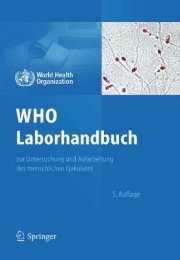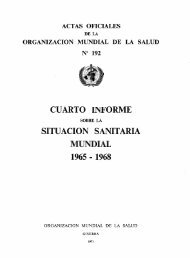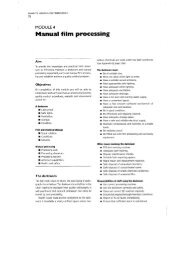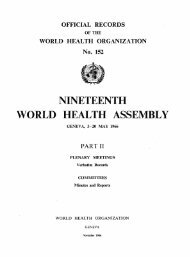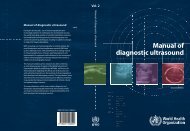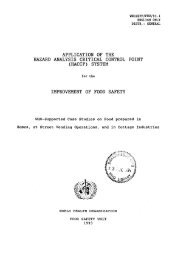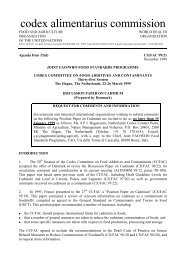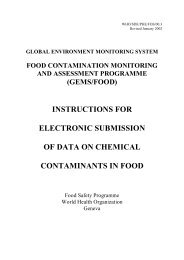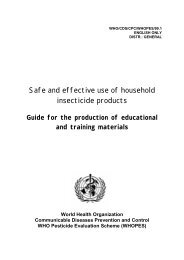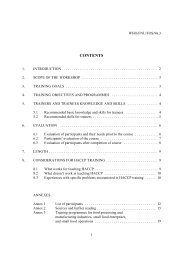IPV BSL-3/polio containment guidelines (Feb 2003) - World Health ...
IPV BSL-3/polio containment guidelines (Feb 2003) - World Health ...
IPV BSL-3/polio containment guidelines (Feb 2003) - World Health ...
You also want an ePaper? Increase the reach of your titles
YUMPU automatically turns print PDFs into web optimized ePapers that Google loves.
8.9 Personnel in the <strong>containment</strong> area at the time of the spill, emergency response<br />
36<br />
personnel law enforcement, medical or fire fighting personnel, and persons involved<br />
in the risk assessment, clean-up and disinfecting of the area should all be considered<br />
at risk for a further breach in <strong>containment</strong> and subsequent <strong>polio</strong>virus dissemination<br />
to the environment. Emergency personnel should be immunized against<br />
<strong>polio</strong>myelitis and have adequate training to understand the need for the <strong>containment</strong><br />
measures in place. Whenever these precautions are not possible, emergency<br />
personnel must be supplied with adequate protective clothing and equipment to<br />
ensure that they do not become infected with <strong>polio</strong>virus in the course of their duties.<br />
Such protective clothing and equipment must be adequately disinfected before<br />
exiting the <strong>BSL</strong>-3/<strong>polio</strong> facility.<br />
8.10 Appropriate medical evaluation surveillance and treatment should be provided<br />
following spills. Particular caution should be exercised in monitoring potentially<br />
infected personnel for faecal shedding of <strong>polio</strong>virus.<br />
8.11 A full evaluation should be carried out after any emergency event involving a<br />
breach of <strong>containment</strong>. The incident and all aspects of the response to the incident<br />
should be fully investigated and documented, and revisions made to existing<br />
contingency plans and staff training as necessary to minimize its repetition.<br />
Adopted by the 53 rd meeting of the WHO Expert Committee on Biological Standardization, 17-21 <strong>Feb</strong>ruary <strong>2003</strong>. A definitive<br />
version of this document, which will differ from this version in editorial but not scientific detail, will be published in the WHO<br />
Technical Report Series.



